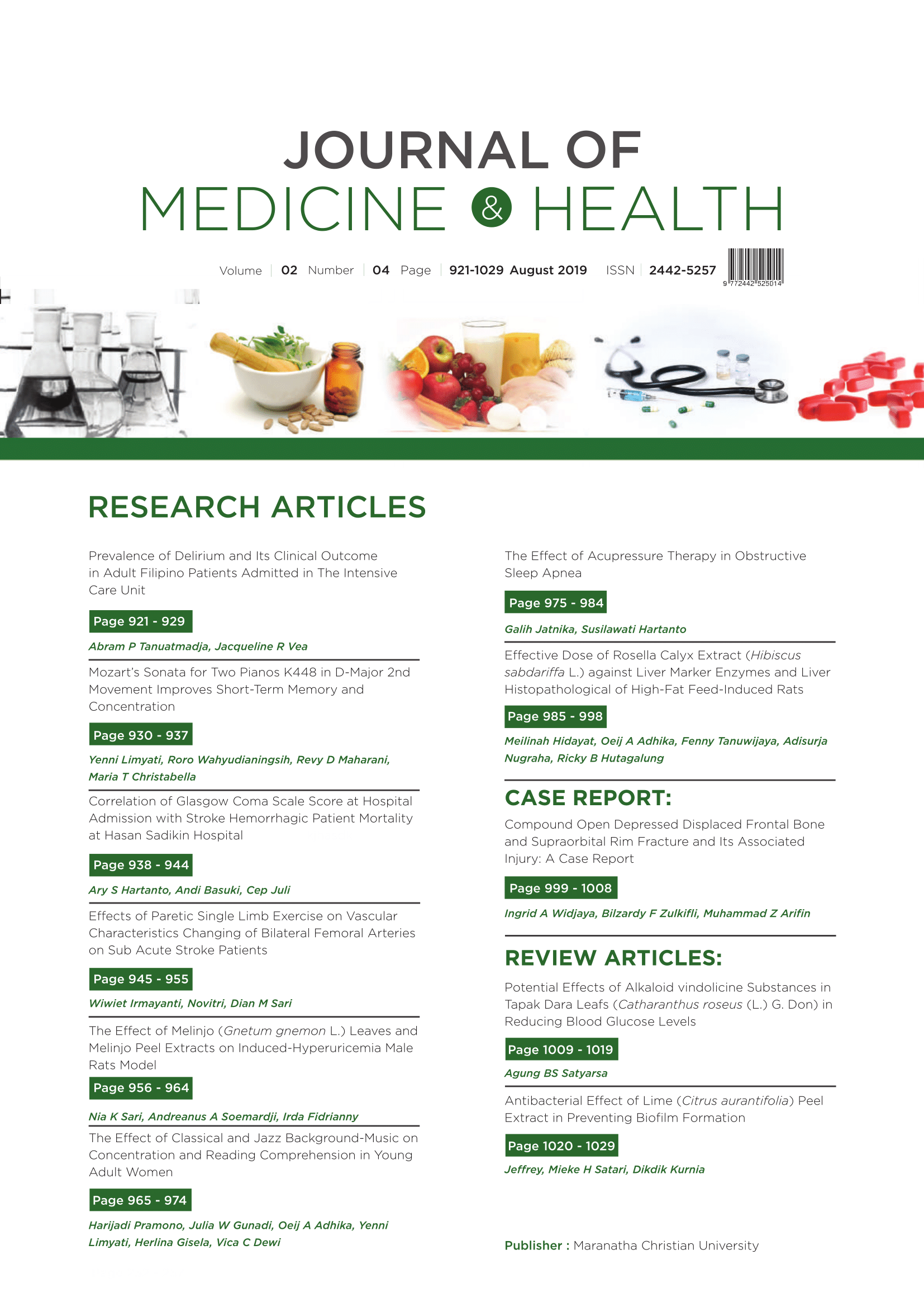Potential Effects of Alkaloid vindolicine Substances in Tapak Dara Leafs (Catharanthus roseus (L.) G. Don) in Reducing Blood Glucose Levels
DOI:
https://doi.org/10.28932/jmh.v2i4.1057Abstract
Diabetes mellitus is a degenerative disease that commonly found and related to an unhealthy lifestyle and genetic factors. Current management of diabetes mellitus includes control of blood sugar levels and prevention of complications. Recent studies found that many phytochemicals have the potential to control blood sugar levels in patients with diabetes. Alkaloid substances from leaves of Tapak Dara have an effect on decreasing blood glucose. This review article aims to describe the potential effects of the Alkaloid vindolicine from Tapak Dara leaves (Catharanthus Roseus L.) in reducing blood glucose levels in patients with type 2 diabetes mellitus. The activity of vindolicine alkaloid against ? cells in previous studies has shown to improve ? cells activity and induce insulin secretion thus preventing further hyperglycemia. In addition, the vindolicine alkaloid also has a role in activating pancreatic ?-TC6 cells and carrying out an immediate reaction in blood vessels. As conclusion, further research is needed to prove the maximum effect of the utilization of tread leaf extract as well as the toxicity test to determine the toxic effects of the alkaloid substances in the tread leaf. Keywords: Type 2 Diabetes Mellitus, Vindolicine Alkaloid, Tapak Dara, blood glucoselevelsDownloads
Download data is not yet available.
Downloads
Published
2019-08-27
How to Cite
1.
Satyarsa ABS. Potential Effects of Alkaloid vindolicine Substances in Tapak Dara Leafs (Catharanthus roseus (L.) G. Don) in Reducing Blood Glucose Levels. J. Med. Health [Internet]. 2019Aug.27 [cited 2026Jan.2];2(4). Available from: http://114.7.153.31/index.php/jmh/article/view/1057
Issue
Section
Articles
License
Authors who publish with this journal agree to the following terms:
- Authors retain the copyright and grant the journal right of first publication with the work
simultaneously licensed under a Creative Commons Attribution-NonCommercial 4.0 International License that allows others to share the work with an acknowledgement of the work's authorship and initial publication in this journal. - Authors are able to enter into separate, additional contractual arrangements for the nonexclusive distribution of the journal's published version of the work (e.g., post it to an institutional repository or publish it in a book), with an acknowledgement of its initial publication in this journal.
 This work is licensed under a Creative Commons Attribution-NonCommercial 4.0 International License.
This work is licensed under a Creative Commons Attribution-NonCommercial 4.0 International License.

















